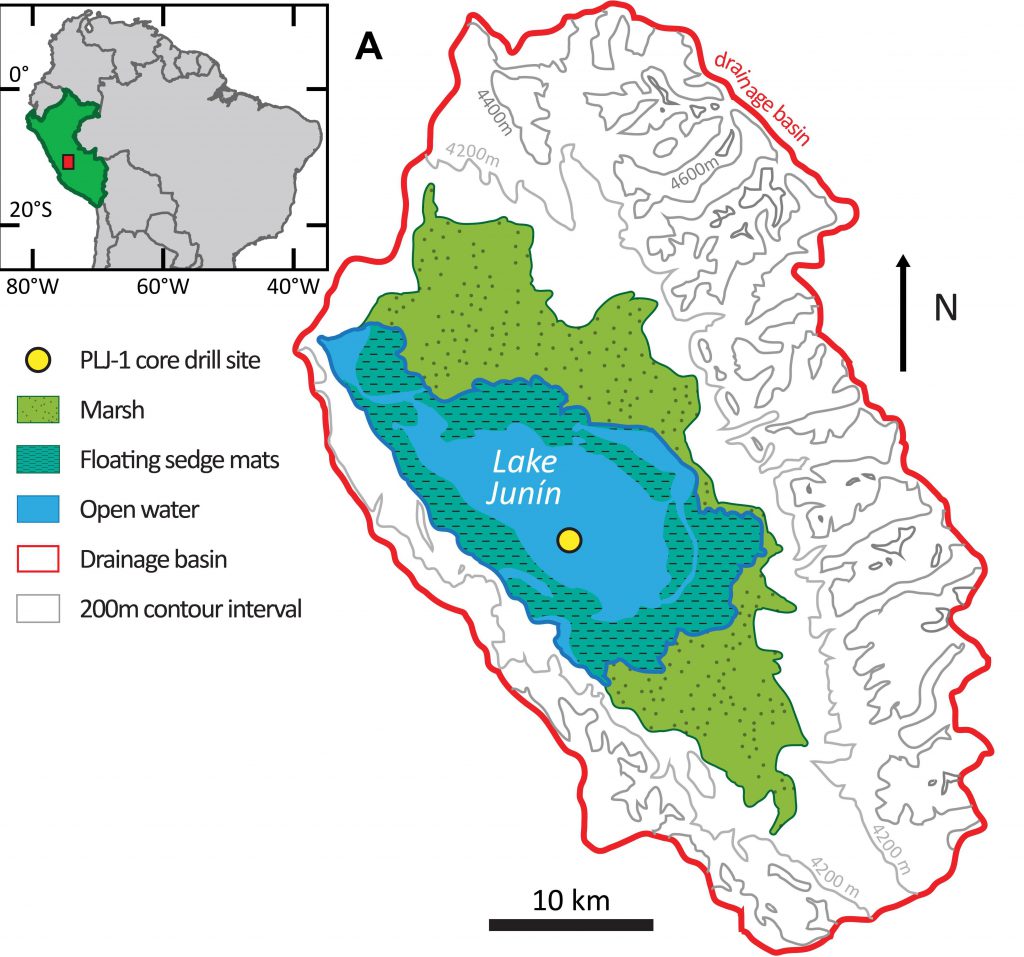What a year for pmag lab publications! Our latest paper from Dr. Robert Hatfield is now published in Frontiers in Earth Science entitled, “Paleomagnetic Constraint of the Brunhes Age Sedimentary Record From Lake Junin, Peru”. The paper is open access, so check it out here: https://www.frontiersin.org/articles/10.3389/feart.2020.00147/full.
Dr. Hatfield was part of a team from institutions across the US and Peru that cored Lake as part of an International Continental Drilling Program (ICDP) project. Lake Junin is a high alpine lake located in the Peruvian Andes at 10,000ft above sea level. The lake preserves a rare, amazingly long, sediment record extending back through multiple glacial and interglacial cycles. The sediments recovered will be used to better understand the El Nino-Southern Oscillation, the South America Summer Monsoon, and the Intertropical Convergence Zone and how these influence tropical glaciation over glacial and interglacial periods. However, as with any past reconstruction, assigning ages to the sediment is important to be able to interpret these records correctly.
Dr. Hatfield collected 109 uchannels and 56 discrete cubes to study the magnetic variability in the 88 meter sediment record to generate a new rock magnetic and paleomagnetic record for Lake Junin. Sediments suitable for quality paleomagnetic reconstructions varied downcore so investigation of the rock magnetic properties was important to be able to filter the paleomagnetic record and retain only the intervals that best preserved past variations in the geomagnetic field. Existing radiocarbon and U/Th dates constrained the upper 50 kyrs and carbonate rich interglacial facies that were spaced every 80-120 thousand years. Dr. Hatfield and team focused on improving the age model during silt-rich glacial intervals that occur between the widely spaced U/Th dates. By comparing the filtered normalized intensity record to well dated RPI stacks the OSU based team was able to resolve sedimentation rate variations during glacials that could not be determined using the U/Th dates alone. As a result the paleomagnetic assisted chronology improved the age model for the Brunhes and sets the foundation to be able to interpret the past climatic data contained within this fascinating record.

Map location of the Lake Junin drainage basin in Peru and the location of ICDP’s drill site (yellow dot).

